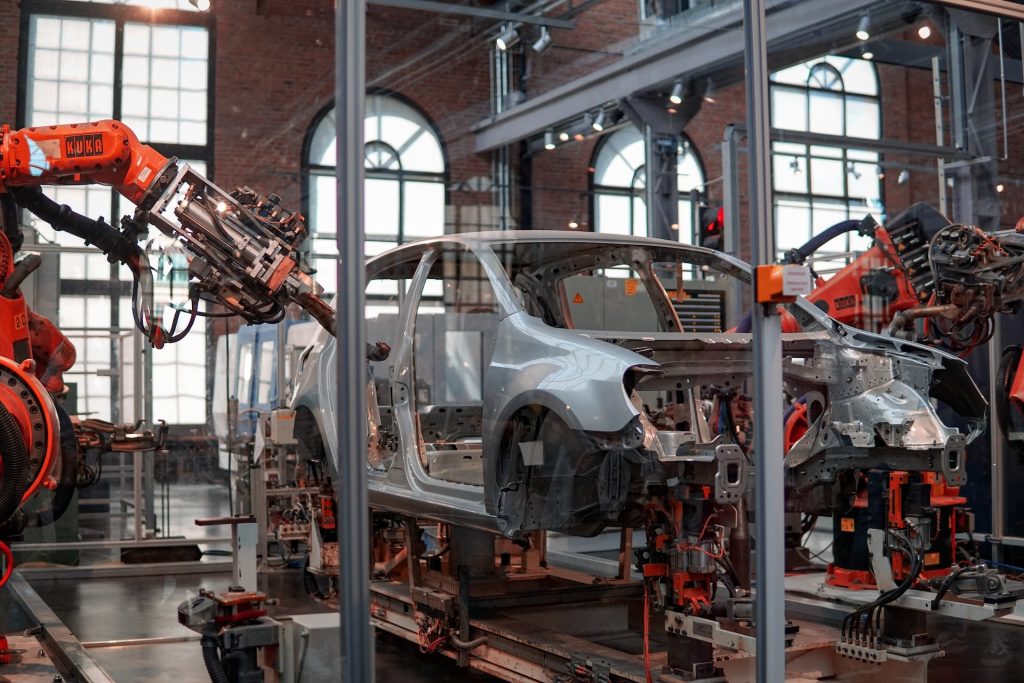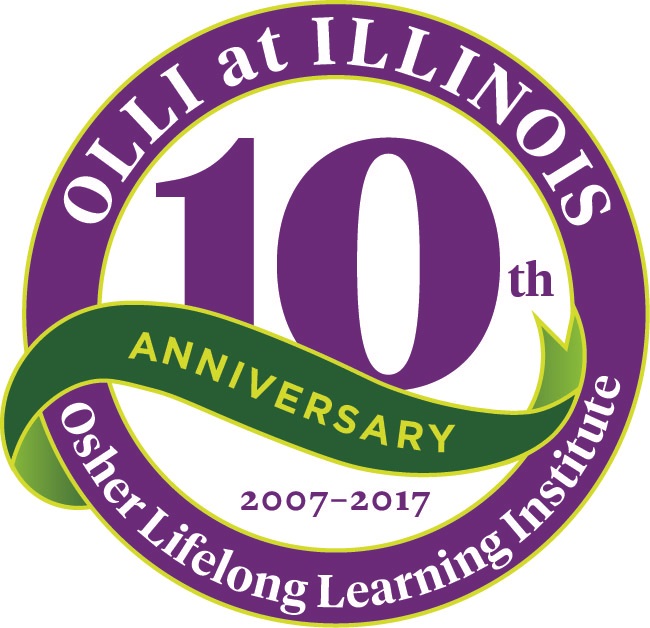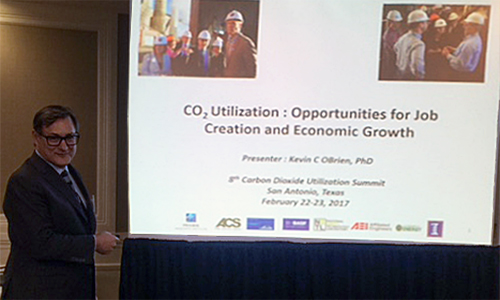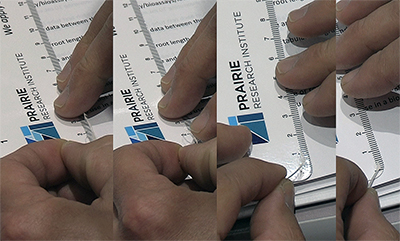WRITTEN BY: Katherine Gardiner, ISTC staff
Plastic waste is one of the leading environmental concerns in the world today.
Many times, consumers use a plastic product just once before throwing it away. We might only see it for a short time – a plastic shopping bag, for example – but that plastic bag can sit in a landfill for decades before it is broken down completely.
The Great Pacific Garbage Patch, areas of floating plastic pieces and microplastics (<5mm) in the Pacific Ocean between California and Hawaii, is estimated to be three times the size of France. Dianna Parker of the NOAA Marine Debris Program insists that cleaning up the garbage patch isn’t enough. She explains, “until we prevent debris from entering the ocean at the source, it’s just going to keep congregating in these areas.”
What if there was a way to stop plastic from filling up our landfills and polluting our waterways?
ISTC researchers B.K. Sharma and Kishore Rajagopalan worked with the United States Department of Agriculture (USDA) to convert plastic bags into fuel.
 The team collected high-density polyethylene (HDPE) bags from local shops and used a pyrolysis unit to turn them into plastic crude oil (PCO). After distilling the PCO, analyzing the resulting fuels, and adding antioxidants, the products met nearly all specifications of the conventional diesel standards.
The team collected high-density polyethylene (HDPE) bags from local shops and used a pyrolysis unit to turn them into plastic crude oil (PCO). After distilling the PCO, analyzing the resulting fuels, and adding antioxidants, the products met nearly all specifications of the conventional diesel standards.
In fact, the researchers’ HDPE-derived fuels beat out conventional petroleum diesel when it came to the fuel’s lubricity and derived cetane number, which is an indicator of the combustion speed. The team concluded that their plastic-based fuel could be blended safely and efficiently with petroleum diesel fuel, reducing the amount of plastic ending up in landfills or out into the environment while also creating something valuable from the waste plastic.
More recently, ISTC researchers B.K. Sharma and Sriraam Chandrasekaran developed the first energy-efficient and environmentally friendly process to separate mixed polymers in waste plastics, allowing the waste plastic to be recycled into new, high-quality plastic products.
Single polymer plastics, such as water bottles, are easy to recycle because they are made with a uniform plastic. Sharma explained that products that are made of more complex polymer blends, such as cellphone cases, “pile up at recycling centers and eventually end up being incinerated or sent to landfills” due to the lack of safe and efficient ways to recycle them.
Currently, the most efficient method for this process involves a chemical called DCM that releases carcinogenic vapors in conditions close to room temperature. The method created by Sharma and Chandrasekaran uses a solvent called NMP, which Chandrasekaran assured, “will only release vapors when heated to 180 degrees Celsius, far above the temperature needed to dissolve the polymers.”
ISTC isn’t the only organization committed to reducing plastic waste.
 Sanjeev Das, Global Packaging Director at Unilever, announced that through a partnership with Ioniqa, a start-up company in the Netherlands, they have found a way to recycle any kind of Polyethylene Terephthalate (PET) plastic. By using this new technology, they are able to break down the PET plastic to the molecular level, remove any colors or impurities, and turn it back into clear food-grade PET plastic.
Sanjeev Das, Global Packaging Director at Unilever, announced that through a partnership with Ioniqa, a start-up company in the Netherlands, they have found a way to recycle any kind of Polyethylene Terephthalate (PET) plastic. By using this new technology, they are able to break down the PET plastic to the molecular level, remove any colors or impurities, and turn it back into clear food-grade PET plastic.
While not available yet, Das estimates the technology could be ready for widespread use by the third quarter of 2019. He believes this technology can revolutionize the plastic recycling industry. By bringing value to PET waste, people and communities all over the world will be motivated to collect plastic, creating a circular economy.
In a commitment to sustainability, Nestle pledged to make all of its packaging recyclable or reusable by 2025. Nestle CEO Mark Schneider stated, “plastic waste is one of the biggest sustainability issues the world is facing today. Tackling it requires a collective approach.”
There are smaller steps companies can take to reduce plastic waste and encourage sustainable habits. Coffee giant Starbucks offers a discount to customers who bring in reusable mugs and has been doing so since 1985. Urbana-Champaign coffee chain Espresso Royale offers a similar discount. Retailers such as Target, Whole Foods, and Trader Joe’s offer discounts for bringing in your own reusable shopping bags.
While the best option for eliminating plastic waste is to reduce our reliance on single use products, plastic use is so heavily engrained in our culture that we might never phase it out completely. These scientific advances in plastic recycling pave the way for a future where there is minimal, if any, plastic waste.



 The team collected high-density polyethylene (HDPE) bags from local shops and used a pyrolysis unit to turn them into plastic crude oil (PCO). After distilling the PCO, analyzing the resulting fuels, and adding antioxidants, the products met nearly all specifications of the conventional diesel standards.
The team collected high-density polyethylene (HDPE) bags from local shops and used a pyrolysis unit to turn them into plastic crude oil (PCO). After distilling the PCO, analyzing the resulting fuels, and adding antioxidants, the products met nearly all specifications of the conventional diesel standards. Sanjeev Das, Global Packaging Director at Unilever,
Sanjeev Das, Global Packaging Director at Unilever, 



 ISTC and the Illinois-Indiana Sea Grant will be hosting a teacher workshop on pharmaceuticals and personal care products (PPCPs) in the environment. PPCPs encompass thousands of chemicals found in fragrances, cosmetics, over-the-counter drugs, and human and veterinary medicines. The U.S. EPA has identified PPCPs as emerging contaminants of concern because little is known about their impacts on ecosystems or risks to human health when they are released into the environment.
ISTC and the Illinois-Indiana Sea Grant will be hosting a teacher workshop on pharmaceuticals and personal care products (PPCPs) in the environment. PPCPs encompass thousands of chemicals found in fragrances, cosmetics, over-the-counter drugs, and human and veterinary medicines. The U.S. EPA has identified PPCPs as emerging contaminants of concern because little is known about their impacts on ecosystems or risks to human health when they are released into the environment.

